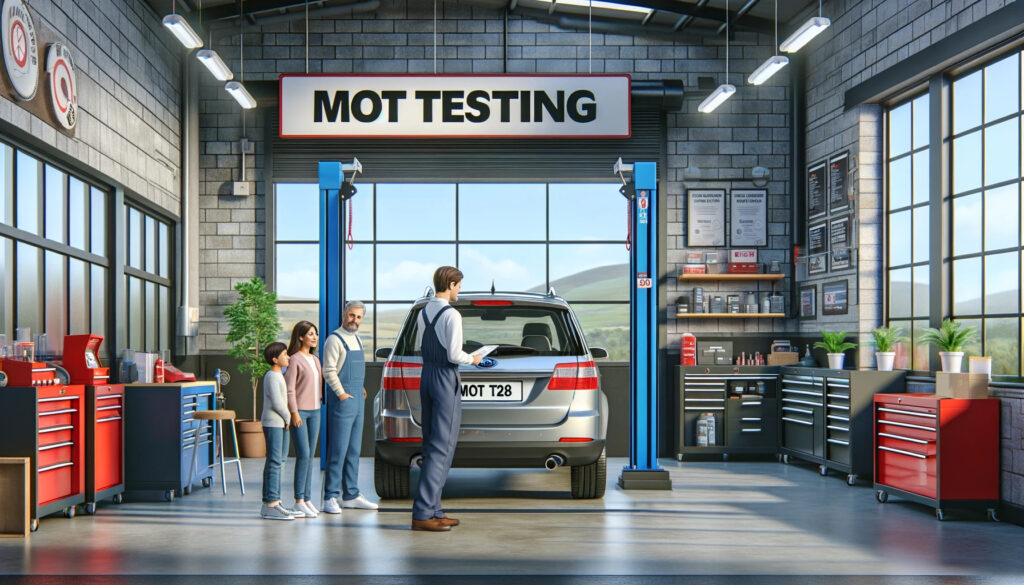As a car owner in the UK, understanding the MOT (Ministry of Transport) test is essential. An MOT ensures that your vehicle meets the minimum safety and environmental standards required by law. Knowing the ins and outs of this test can help you keep your family safe on the road and avoid any legal complications. This guide will provide you with a detailed overview of MOTs, their importance, and how to ensure your vehicle passes with flying colours.
What is an MOT?
An MOT is an annual test for vehicle safety, roadworthiness aspects, and exhaust emissions required for most vehicles over three years old in the UK. Unlike regular servicing, which focuses on general maintenance and addressing wear and tear, an MOT is a strict inspection regulated by the DVSA (Driver and Vehicle Standards Agency). The primary goal is to ensure that your vehicle is safe to drive and compliant with environmental standards.
Why is an MOT important?
Having a valid MOT certificate is not only a legal requirement but also crucial for ensuring your vehicle’s safety. Driving without a valid MOT can lead to severe penalties, including fines and points on your licence. More importantly, an MOT can identify potential issues that could make your vehicle unsafe to drive, protecting you and your family from accidents.
How often do you need an MOT?
Most vehicles require an MOT test annually once they are over three years old. However, some vehicles, like classic cars over 40 years old, are exempt from this requirement. Missing your MOT can lead to legal consequences, and driving without a valid certificate can invalidate your insurance. Therefore, it’s crucial to keep track of your MOT due dates and schedule tests in advance.
What is checked during an MOT?
During an MOT, various components and systems of your vehicle are thoroughly inspected, including:
- Brakes
- Fuel system
- Lights
- Mirrors
- Seatbelts
- Windscreen
- Wipers and washers
- Exhaust system
- Tyres and wheels
- Suspension
Each part is checked against stringent criteria to ensure it meets safety standards. Recent changes to the MOT test have introduced stricter emissions standards and updated defect categories, which are now classified as dangerous, major, or minor.
What happens if your vehicle fails its MOT?
If your vehicle fails its MOT, you will be given a VT30 Refusal of an MOT Test Certificate. This document will detail the reasons for the failure. You have a 10-day window to address the issues and get your vehicle retested. The cost of repairs can vary depending on the severity of the faults. It’s important to note that driving a vehicle that has failed its MOT can result in penalties unless you’re driving it to a repair shop.
How to prepare for an MOT
Preparation is key to ensuring your vehicle passes its MOT. Here are some steps to take before your test:
- Check all lights are working.
- Ensure tyres are inflated to the correct pressure and have sufficient tread depth.
- Top up all essential fluids, including oil, brake fluid, and windscreen washer fluid.
- Inspect your windscreen for cracks or chips.
- Make sure your mirrors and windows are clean and unobstructed.
- Listen for any unusual noises from the engine or brakes.
By taking these steps, you can identify and address minor issues that could lead to a failed test.
Tips for passing your MOT
To increase your chances of passing your MOT, consider the following tips:
- Regularly service your vehicle to keep it in good condition.
- Address any dashboard warning lights immediately.
- Fix small problems as soon as they arise, rather than waiting for them to worsen.
- Keep your vehicle clean, both inside and out, to make a good impression on the tester.
- Book your MOT in advance to avoid last-minute rushes and ensure you have time for necessary repairs.
How much does an MOT cost?
The cost of an MOT can vary, but the maximum fee for a car is set by the government at £54.85. Some garages may offer discounts or special deals, so it’s worth shopping around. However, beware of extremely low prices as they might be indicative of substandard services. Always choose a reputable and authorised MOT testing centre.
Where can you get an MOT?
You can get an MOT at any authorised testing centre across the UK. These include:
- Dealerships
- Independent garages
- Council-run MOT test centres
Choosing an authorised testing centre ensures that your MOT is conducted to the highest standards. While independent garages may offer more competitive prices, dealership centres often have more comprehensive facilities and experienced technicians.
How to check your MOT history
Checking your vehicle’s MOT history can provide valuable insights into its condition and any recurring issues. To access this information:
- Visit the official GOV.UK website.
- Enter your vehicle’s registration number.
- Review the detailed history, including past results, advisories, and test dates.
Understanding your MOT history helps you stay informed about your vehicle’s performance and anticipate future repairs.
Conclusion
Understanding MOTs is vital for all vehicle owners in the UK. This comprehensive guide has covered everything from the basics of what an MOT is, why it’s important, to how to prepare for and pass the test. By following the tips and advice provided, you can ensure that your vehicle remains safe, legal, and in good working order. Remember to schedule your MOT test in advance, keep up with regular maintenance, and stay informed about your vehicle’s condition. This proactive approach will help you avoid unnecessary costs and keep you and your family safe on the roads.

